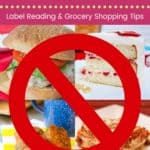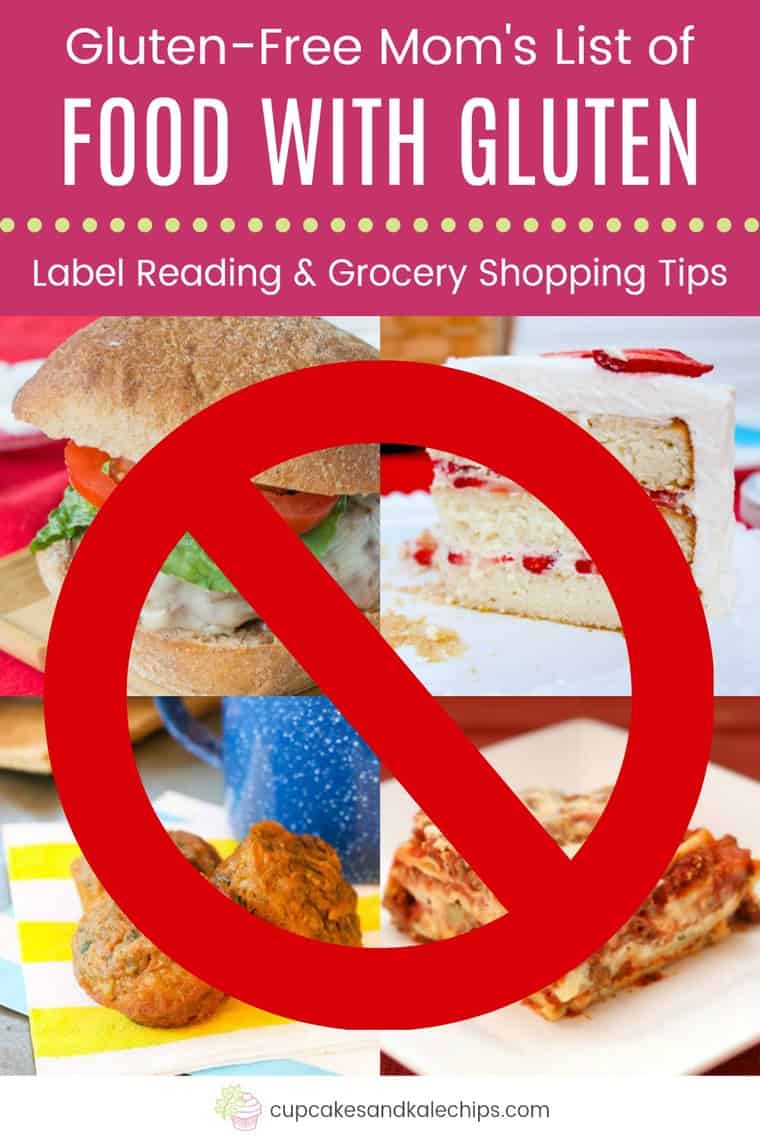
Foods with gluten might seem obvious because most of us know about bread, pasta, and baked goods that contain wheat, barley, or rye. But gluten-containing ingredients might have some sneaky names or your food could contain hidden sources of gluten. Use this list of tips for what to look for the next time you are grocery shopping or reading labels on products in your pantry.

If you or a friend or family member has recently been diagnosed with celiac disease, a gluten allergy or intolerance, or another medical condition where you have to start a gluten free diet, you might feel overwhelmed. But just take things one step at a time!
Before stressing out, remember there is still a lot of food you CAN eat on a gluten free diet! Focus on foods that are naturally gluten free that you already love, like fruit, vegetables, dairy, meat, and gluten free grains like quinoa. You’ll notice that many of these things are not processed, and that is always a good place to start so you don’t have to stress about reading labels and finding hidden sources of gluten.
Then begin to familiarize yourself with the words and phrases that may signal hidden gluten. Go through this list, clear out your pantry, and get a better idea of what NOT to buy when you go to the grocery store. Then you’ll be well on the way towards transitioning to a gluten free lifestyle or making yummy food for someone else who is.
Armed with this knowledge, you’ll be able to buy everything you need for…
Note: this is NOT a complete list, and is meant to serve as a guide. If you are not completely sure, it is best to contact the company directly and consult with your healthcare provider.
Before getting to the ingredients, sometimes the product container will make it clear that you can or cannot have it without even needing to read the ingredient list just by the labels or allergy warnings.
Typically you CAN have any items with the following words on the label:
AVOID anything with the following words on the label:
USE CAUTION and consult with your healthcare provider to understand your level of sensitivity when the label contains:
Do NOT eat any foods that have any of these words on the ingredient list. They all contain gluten. Some are other names for wheat, some are other forms of wheat, some are other gluten-containing grains like barley and rye, and some are derived from the gluten-containing grains.
Use caution. Many of these items, like the catch-all phrases “Natural flavoring” and “Modified food starch” may be made with a gluten ingredient, but when listed on a label, they do not break down the components.
Some, like soy sauce, are made with wheat in the preparation process. Others, like oats, have a high risk of cross-contamination.
If you do not have to worry about cross-contamination or trace amounts of gluten, then these items may be just fine for you to consume. However, if you have celiac disease or a severe intolerance, then only consume if the label indicates that they are certified gluten-free (as discussed above) and again, only after consultation with your doctor.
BRIANNE’S GLUTEN FREE MOM TIP: Are you missing sandwiches and French toast? We did a taste test of seven brands to find the BEST Gluten Free Bread. See if you agree with our choice!
Some of these are sneaky. You wouldn’t expect that meats and coffee would contain gluten. So when buying items like these, check for allergy labels or warnings, then read the ingredient list. I’m going to repeat this – if you are not completely sure, it is best to contact the company directly and consult with your healthcare provider.
And remember, there is still so much you CAN enjoy. Like…

Welcome to Cupcakes & Kale Chips, where I share gluten free recipes & kid-tested family favorites!
